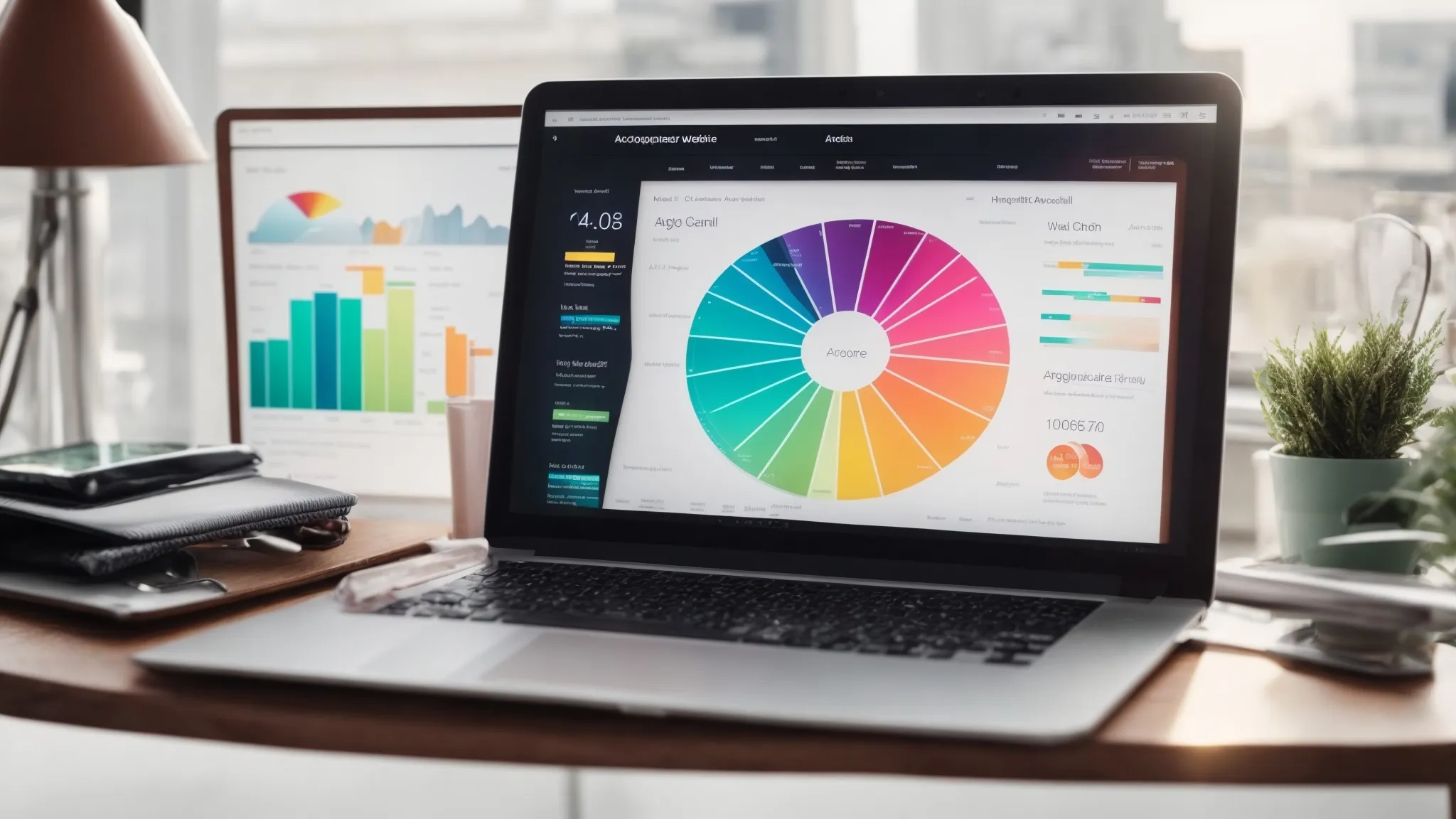Digital Marketing Trends 2023
Emerging Digital Marketing Trends to Watch in 2023 As the digital marketing landscape evolves, professionals anticipate the impact of emerging technologies and shifting consumer behaviors on their […]
Emerging Digital Marketing Trends to Watch in 2023
As the digital marketing landscape evolves, professionals anticipate the impact of emerging technologies and shifting consumer behaviors on their strategies.
From the intricacies of AI and machine learning automating and refining marketing efforts, to the craft of creating video content that captures the essence of a brand’s narrative, the approaches to optimize reach and engagement continue to be redefined.
Voice search optimization is swiftly moving from a novel idea to a critical must-have, aligning seamlessly with the rise of hands-free devices and queries.
Meanwhile, the delicate art of balancing personalization with user privacy is reshaping brand-customer dynamics in profound ways.
Keep reading to explore how these trends are set to redefine the benchmarks of successful digital marketing in 2023.
Key Takeaways
- AI-driven Tools Enhance Predictive Analytics and Digital Marketing Strategies
- Voice Search Optimization Is Becoming Imperative for SEO and Digital Content
- Marketers Are Focusing on Privacy-First Strategies to Adapt to New Regulations
- Nostalgia Marketing Connects Diverse Demographics and Adds Depth to Brand Storytelling
- Augmented Reality Is Redefining Consumer Engagement and the Shopping Experience
The Rise of AI-Driven Digital Marketing Strategies

As the digital marketing landscape continues to evolve, the fusion of artificial intelligence (AI) with strategic marketing efforts is becoming increasingly integral for companies aiming to maintain a competitive edge.
2023 marks a critical juncture where AI’s prowess in elevating marketing strategies is particularly evident.
AI-driven tools are burgeoning, offering insights into predictive analytics that preempt consumer needs and market trends, setting the stage for more informed decision-making.
Concurrently, advancements in natural language processing are endowing chatbots with an unprecedented level of sophistication, enabling these digital assistants to interact with users in a strikingly human-like fashion.
Moreover, the power of AI to sift through expansive data sets is revolutionizing how businesses conduct customer segmentation, tailoring unique experiences at a remarkably personalized level.
This technological shift is not merely a fleeting trend but a cornerstone that shall dictate the efficiency of digital marketing endeavors in the year ahead.
Harnessing AI for Predictive Analytics
As organizations navigate the complexities of the digital marketing landscape, leveraging AI for predictive analytics emerges as a critical differentiator. This data-driven approach enables marketers to forecast consumer behaviors with remarkable accuracy, allowing them to craft messages and campaigns that resonate deeply with their target audience. With Predictive Models analyzing past and present data, businesses can anticipate needs and preferences, adjusting their strategies proactively.
In deploying AI-driven predictive analytics, companies unlock the potential to optimize every facet of their marketing campaigns. From tuning the reach and timing of PPC Google Ads to refining content strategy for a higher engagement rate, these analytics tools illuminate the path toward enhanced conversion rates. They serve as integral assets for marketers who seek not just to react to the market but to shape it, staying ahead of competitors and consumer trends alike.
Chatbots Become More Human-Like
In the realm of digital marketing, the transformation of chatbots into more sophisticated communicators exemplifies AI’s capability to enhance customer interactions. These advanced AI algorithms are now adept at parsing customer inquiries, providing responsive and contextually appropriate assistance.
Companies are quickly adopting chatbots, aware that their improved natural language processing allows for smoother, more natural conversations with users. This progression in Digital PR services signifies a seismic shift in the way businesses engage with their audience, moving towards a future where digital dialogues replicate the nuances of human interaction.
Automating Customer Segmentation With AI
The advent of AI in customer segmentation heralds a future where targeted marketing becomes exponentially more efficient. digital marketing solutions are now equipped with AI capabilities that analyze customer data, leading to precise segmentation and the creation of highly personalized marketing messages without the need for constant human oversight.
Leveraging machine learning, tools such as LinkGraph’s SearchAtlas SEO software optimize this process by swiftly identifying patterns among vast user datasets. This allows digital marketing professionals to like LinkGraph to tailor content and offers to segmented groups, significantly enhancing the relevance of marketing campaigns and improving the overall user experience.
Personalization at Scale With Advanced Data Analytics

The horizon of digital marketing is perpetually on the cusp of innovation, and as businesses march into 2023, personalization becomes more than a mere buzzword—it crystallizes into the nexus of effective marketing strategies.
Distinct from the one-size-fits-all approach of yesteryears, today’s digital marketing solutions artfully blend advanced data analytics with skillful execution to carve out bespoke experiences for every individual.
This transition to crafting individual customer experiences signifies a radical move towards real-time personalization in marketing campaigns, fueled by enhanced customer profiling that leverages the power of big data.
It illuminates a path where every interaction is shaped to meet the unique preferences and behaviors of a customer, establishing new benchmarks in engagement and consumer satisfaction.
Crafting Individual Customer Experiences
The digital era’s pulse quickens as businesses discern the monumental impact of personalization in crafting customer experiences. Grasping the nuances of consumer behavior, digital marketing solutions now harness sophisticated data analytics to deliver experiences uniquely attuned to each user’s preferences and behaviors, fostering an era where customer journeys are not just seen, but profoundly felt and individualized.
Amidst the swell of digital activity, companies equipped with the right tools, such as LinkGraph’s innovative suite, are orchestrating marketing symphonies that resonate on a personal level with every member of their audience. This granular level of personalization acts as the keystone in building lasting customer relationships, ensuring that every digital touchpoint is an opportunity to reinforce brand loyalty and trust.
Real-Time Personalization in Marketing Campaigns
Real-time personalization is rapidly ascending as a cornerstone strategy in effective digital marketing campaigns. Brands that capitalize on this trend are leveraging AI-enhanced digital tools, such as LinkGraph’s SearchAtlas, to dynamically adjust their marketing messages and offers based on live consumer interactions and behavior.
This level of immediacy in adapting marketing strategies not only boosts the effectiveness of campaigns but also significantly enhances the customer’s shopping experience and brand perception. Tools provided by LinkGraph facilitate seamless transitions between data collection and action, ensuring that each customer feels uniquely valued and understood:
- Understanding individual customer behaviors through AI-driven analytics
- Iteratively tailoring marketing messages and recommendations in real-time
- Enhancing the customer journey by aligning marketing efforts with live engagement data
Enhanced Customer Profiling Through Big Data
Big data’s role in refining customer profiling has become a pivotal aspect of digital marketing strategies. By harnessing the extensive data points available, businesses can extract actionable insights that reveal not just demographics but psychographics and behavioral tendencies of their audience.
Armed with these insights, companies can develop more nuanced profiles that lead to hyper-targeted marketing campaigns:
- Gleaning in-depth knowledge from customer interactions across multiple channels
- Identifying emerging patterns and preferences to predict future behavior
- Formulating targeted communications that speak directly to an individual’s needs and interests
It is this strategic application of big data that empowers brands to not just understand, but anticipate customer needs, creating a symbiotic relationship between data analytics and personalized marketing.
Video Content Dominates Digital Storytelling

As the digital marketing world turns its gaze to the horizon of 2023, video content surges to the forefront of digital storytelling, asserting its dominance as both a medium of choice and a potent vehicle for brand narratives.
This medium has unfurled intriguing possibilities for marketers, from the explosion of short-form video platforms harnessing the ever-diminishing attention spans of audiences to the entrenchment of live streaming as an essential facet of marketing arsenals.
Additionally, the rise of interactive video content heralds a new age of consumer engagement, inviting audiences to partake in a more dynamic and participatory form of brand storytelling.
The strategic integration of these video trends is set to reshape the panorama of user experience, with visual innovation standing as a pivotal force in captivating and retaining consumer attention.
The Explosion of Short-Form Video Platforms
In 2023, short-form video platforms continue their meteoric rise within the digital marketing realm, becoming essential tools for quick, compelling storytelling that grabs attention in mere moments. These platforms cater to the brisk pace of contemporary life, delivering snackable content that fits neatly into the fragmented schedules of consumers.
Businesses are now adeptly using these video platforms to craft punchy, memorable Marketing Narratives that harness the power of visual engagement. Such formats have proven highly effective in connecting with a diverse audience, boosting brand recognition and capturing the collective imagination in an era of shrinking attention spans and mobile-first content consumption.
Live Streaming as a Marketing Staple
As digital marketing continues its rapid advancement, live streaming cements itself as an indispensable tool for real-time audience engagement. Brands are increasingly harnessing its potential to foster a sense of community and immediacy, providing an unfiltered glimpse into the brand’s world that no other medium can replicate.
The ability to broadcast live events, Q&A sessions, and behind-the-scenes looks constitutes a shift in how the audience participates in a brand’s narrative. This interactive approach not only enhances the sense of authenticity but also greatly increases the potential for viewer participation and direct feedback, contributing to stronger consumer-brand connections.
Interactive Video Content for Engagement
Interactive video content is rapidly carving out its place as a pivotal element in strengthening user engagement within digital marketing campaigns. This novel form of content invites the viewer to become an active participant, making choices that dictate the narrative flow or unlocking additional content, thereby fostering a deeper connection with the brand.
The seamless integration of interactive elements into video content bridges the gap between passive viewing and active involvement, significantly enhancing the consumer’s brand experience. As a strategy, it elevates the viewer from a mere observer to an engaged participant, enhancing the overall impact and memorability of marketing messages.
Voice Search Optimization Becomes a Priority

As businesses adapt to the seismic shifts in consumer behavior, voice search optimization secures its position as a leading force in the current digital marketing strategy.
The emergent prevalence of voice-activated devices has prompted a reshaping of SEO strategies to accommodate the conversational tone and natural language patterns inherent to voice queries.
With the ascendance of smart speakers and virtual assistants, the imperative to refine digital content for auditory search experiences makes optimizing for voice search an indispensable element of any forward-looking digital marketing approach.
Adapting SEO Strategies for Voice Queries
Aligning SEO strategies with the nuances of voice search is paramount as digital assistants grow increasingly ubiquitous. Marketers are refining their approaches to emphasize conversational keywords and question-based phrases that align with the spoken queries users are likely to use. This strategic pivot is essential for staying relevant in the fast-evolving search generative experience.
Companies are focusing on enhancing their local SEO efforts in response to the prevalent use of voice search for local queries. Ensuring that business listings are accurate and replete with rich details becomes more crucial as more users turn to voice-activated devices to guide their immediate purchasing decisions. Mindful optimization for voice search reflects an attentive stance on a company’s digital strategy.
Incorporating Natural Language in Content
As digital marketers refine their content for voice-enabled queries, the inclusion of natural language becomes paramount. Incorporating the fluid diction that mirrors everyday conversation ensures that content is primed for voice search algorithms, resonating more effectively with voice-activated devices’ understanding and user preferences.
By weaving natural speech patterns into digital content, brands cultivate a rapport with users who rely on voice search for swift, accurate answers. This linguistic alignment bridges the gap between how people naturally ask questions and how search engines index and retrieve information:
| Consideration | Importance in Voice Search | Impact on Content Strategy |
|---|---|---|
| Conversational Tone | High | Content adopts a friendly, approachable voice. |
| Question-Based Phrasing | Medium | Content includes likely spoken queries. |
| Local Search Optimization | Essential | Content emphasizes local relevance and specifics. |
Optimizing for Smart Speakers and Virtual Assistants
Businesses are acknowledging the rise of smart speakers and virtual assistants, realizing the importance of optimizing content to meet the demands of these devices. Proper optimization allows a company’s brand to be conveniently accessible in the home of every user, simply through a voice command, making it an essential facet of a comprehensive digital marketing strategy.
Ensuring that a brand’s digital content is compatible with voice search technologies signifies a robust commitment to a user-focused marketing approach. Organizations implement this by enhancing their website features and information architecture to better serve the algorithms underpinning smart devices, thus amplifying their presence in the conversational search space.
Influencer Marketing Evolves With Micro-Influencers

In the ever-evolving sphere of digital marketing, the approach to Influencer Marketing is witnessing a significant paradigm shift.
Heading into 2023, brands are gravitating toward engaging with micro-influencers who offer a highly focused reach, catering to niche audiences with authentic and resonant voices.
This targeted strategy favors meaningful engagement over broad-based appeal, acknowledging the power harnessed in the intimate and loyal followings of these smaller-scale influencers.
Recognizing the sustainable impact of building long-term partnerships, savvy digital marketers are nurturing these relationships, intertwining their narratives with micro-influencers to weave a more compelling brand story.
Moreover, the authenticity factor is further amplified by integrating user-generated content, which has proven instrumental in building trust and driving conversion in meticulously crafted campaigns.
Focusing on Niche Audiences
As the digital sphere fragments into ever more specialized niche markets, the role of micro-influencers is undergoing a significant transformation. These individuals, seen as trusted authorities within specific niches, command highly engaged audiences, making them an increasingly valuable asset for brands seeking to connect with well-defined demographic segments.
Brands are swiftly recognizing the appeal of partnering with micro-influencers whose followers match their target audience’s profile. Such partnerships offer a streamlined channel to an engaged and receptive audience, reducing the noise often associated with broader marketing campaigns and enhancing precision in brand messaging.
| Strategic Focus | Role of Micro-Influencers | Impact on Brand Engagement |
|---|---|---|
| Audience Specialization | Conveying authentic expertise within niches | Elevated trust and resonance with targeted cohorts |
| Enhanced Message Precision | Direct access to concentrated customer bases | Increased relevance and impact of brand communications |
Building Long-Term Partnerships With Micro-Influencers
The shift towards cultivating enduring relationships with micro-influencers is becoming a cornerstone in contemporary digital marketing strategies. Recognizing that the potency of influence is often layered within community trust and sustained interaction, discerning brands are embarking on partnerships that span beyond mere transactional engagements, planting the seeds for long-term collaborations that promise mutual growth and deeper brand integration.
By investing in these relationships, companies are not only tapping into the wellspring of loyalty that micro-influencers command but are also setting the stage for continuous advocacy and an authentic voice that resonates with niche markets. This strategic alignment fosters a symbiotic dynamic, where influencers become intrinsic ambassadors, weaving the brand’s narrative into the fabric of ongoing conversations with their audience:
| Partnership Aspect | Benefits for Brands | Impact on Audience Engagement |
|---|---|---|
| Sustained Collaboration | Long-term association and brand alignment | Heightened trust and loyalty from audience |
| Authentic Advocacy | Genuine endorsements aligned with influencer’s ethos | Deeper resonance and relatability with niche segments |
Leveraging User-Generated Content in Campaigns
Within the influencer marketing landscape, the integration of user-generated content serves as a testament to trust and authenticity in brand campaigns. By curating and showcasing content that customers have created, companies amplify the voices of their most passionate advocates, fostering a community-led brand presence that resonates strongly with new and existing consumers.
This community-driven content approach not only endorses the brand through genuine consumer narratives but also encourages additional customers to share their experiences, creating a cascading effect of organic, peer-influenced marketing. Such strategies underscore the importance of customer engagement, converting everyday users into compelling spokespeople for the brand.
| User-Generated Content Element | Benefit to Brands | Impact on Consumer Engagement |
|---|---|---|
| Authenticity | Strengthens brand trustworthiness | Emboldens audience confidence and connection |
| Peer Influence | Taps into the power of social proof | Inspires user participation and content creation |
Augmented Reality Creates Immersive Brand Experiences

In keeping with its trajectory of innovation, the digital marketing landscape in 2023 witnesses the significant rise of augmented reality (AR), reshaping the way brands interact with their audience.
This cutting-edge technology blurs the lines between the tangible and digital worlds, offering enhanced shopping experiences and adding a vivid layer to mobile marketing strategies.
AR is revolutionizing eCommerce with virtual try-ons, allowing customers to envisage products with a newfound realism.
Simultaneously, AR enriches narratives, giving marketers novel tools to weave captivating brand stories.
As these immersive experiences become increasingly mainstream, they stand poised to redefine consumer engagement, setting new standards in personalized marketing.
Integrating AR Into Mobile Marketing
In a world where mobile phones serve as the primary gateway to the digital universe, augmented reality (AR) has emerged as a transformative force in mobile marketing. Brands are keenly adopting AR to provide interactive elements within mobile applications, giving users the power to not only view products but to engage with them in their real-world environment.
This technological integration is fundamentally altering the user’s journey, from passive browsing to active exploration, as companies innovate to embed AR features that allow consumers to visualize products in their space before making a purchase. Such immersive experiences, facilitated by AR, are proving essential in bridging the gap between digital convenience and physical tangibility.
AR-driven Virtual Try-Ons Boost eCommerce
With the integration of AR-driven virtual try-ons, eCommerce platforms are experiencing a renaissance in the way consumers shop online. These immersive technologies are not simply enhancing the shopping experience; they are redefining it, granting users the ability to try products virtually, increasing confidence in purchasing decisions.
This shift towards AR in eCommerce minimizes the hesitation often associated with online shopping, as customers gain a virtual fitting room in the comfort of their own homes. The seamless union of AR with eCommerce platforms is championing a new era for digital retail, where the physical barriers to product interaction are effectively surmounted.
| Enhancement in eCommerce | Benefit | Customer Outcome |
|---|---|---|
| AR Virtual Try-Ons | Enhanced Product Interaction | Increased Purchase Confidence |
| Home-Based Virtual Fitting | Convenience and Accessibility | Reduced Return Rates |
Enhancing Brand Storytelling With AR Features
Augmented reality is swiftly becoming a powerful tool for marketers aiming to craft compelling brand narratives that resonate with consumers on an experiential level. By infusing AR into storytelling efforts, brands are able to present their narratives in a multi-dimensional space, engaging customers in a storyline that unfolds through interactive, augmented elements that captivate the sense and imagination.
The integration of AR features provides a novel way for brands to convey their core values and message, resulting in storytelling that goes beyond mere words or images. With AR, the brand’s story is no longer a static text or visual but a living scene with which consumers can interact, leading to immersive brand experiences that forge stronger emotional connections with the audience.
Sustainability: A Core Theme in Digital Marketing Messages

As the digital marketing field forges ahead in 2023, sustainability climbs the agenda, becoming a pivotal focus for brands worldwide.
With a growing collective of environmentally and socially aware individuals, marketers are adopting greener narratives, amplifying their commitment to sustainable practices within their digital undertakings.
This shift towards promoting eco-friendly products and engaging with socially-conscious consumers reflects a broader societal push for responsible business practices.
Brands leading with their sustainability efforts in marketing strategies find themselves at an advantage, resonating with a consumer base that increasingly prizes ethical considerations alongside product quality and brand affinity.
Promoting Eco-Friendly Products and Practices
In 2023, digital marketing professionals are laser-focused on leveraging eco-friendly narratives to connect with socially-conscious audiences. As sustainability becomes a top priority for consumers, brands are rapidly adjusting their digital messaging to highlight green initiatives and environmentally responsible products.
By actively promoting sustainability through digital channels, companies are not only demonstrating their commitment to global stewardship but also tapping into the zeitgeist of consumer values. This strategy positions brands as leaders in the push for a more sustainable future while aligning with the consumer demand for transparency and environmental accountability.
Engaging With Socially-Conscious Consumers
In an age where social responsibility extends beyond the realm of rhetoric, digital marketing strategies need to resonate with the values of socially-conscious consumers. This demographic scrutinizes the ethical dimensions of their purchases, seeking brands that genuinely embody sustainable and responsible business practices.
Deploying digital marketing techniques that highlight a brand’s social initiatives can foster a strong bond with this conscientious segment. Companies that articulate their sustainability missions and showcase their positive social impact may engender a profound sense of loyalty among consumers who prioritize these values:
| Consumer Expectation | Brand Response | Consumer Engagement |
|---|---|---|
| Ethical Business Practices | Transparent Sustainability Missions | Increased Brand Trust |
| Responsible Consumption | Marketing Eco-friendly Products | Heightened Consumer Advocacy |
Thus, in the 2023 digital marketing ecosystem, adeptly communicating a brand’s commitment to ethical standards and sustainability is crucial. Marketers executing campaigns with a keen awareness of social responsibility can capitalize on the growing call for brands that contribute positively to the wider community.
Highlighting Brand Sustainability Efforts in Marketing
Marketing strategies in 2023 are increasingly showcasing brands’ dedication to sustainability, with digital marketing becoming a platform for emphasizing environmentally-sound initiatives and practices. By doing so, companies are not only addressing the ecological concerns of their audience but are fortifying their own brand integrity and fostering consumer trust.
Embedded within the strategic marketing narratives are stories of how companies are reducing their carbon footprints, engaging in fair-trade practices, and innovating in eco-friendly product development. These tales of sustainability go beyond surface-level promotion, reflecting a deeper ethos that consumers seek in the brands they support:
| Marketing Strategy | Sustainability Focus | Consumer Impact |
|---|---|---|
| Eco-centric Storytelling | Minimizing environmental impact | Deepens brand loyalty and respect |
| Innovation in Product Development | Eco-friendly goods and services | Aligns with consumer values and ethics |
With a finger on the pulse of contemporary concerns, savvy digital marketers are integrating these green principles within their campaigns, using the digital stage to effectively communicate their brand’s proactive stance on sustainability issues. This alignment with global efforts for environmental protection acts as both a brand differentiator and an impactful draw for today’s ethically-minded consumer.
Interactive Content Engages Audiences More Than Ever

The realm of digital marketing is continuously morphing, offering unprecedented avenues for engaging with audiences.
In 2023, the potent lure of interactive content stands out, capturing the collective interest of users through innovative formats that encourage participation and enhance the richness of the user experience.
Within this interactive space, the rise of quizzes and polls, coupled with data-rich interactive infographics and the playful allure of gamification, are revolutionizing the content marketing scene.
These tools are not mere novelties; they are reshaping how brands cultivate a dialogue with their target audience, fostering a dynamic that transforms passive consumers into active participants and co-creators in the brand’s unfolding story.
The Rise of Quizzes and Polls in Content Marketing
The integration of quizzes and polls within content marketing strategies has surged as brands realize the potent engagement they elicit from audiences. This highly interactive form of content harnesses the innate human tendencies of curiosity and self-expression, driving users to actively participate and share their opinions or preferences.
Marketers adeptly employ these tools to glean valuable insights into consumer behavior and preferences, simultaneously nurturing a two-way conversation that elevates the user experience. Through such engagement, brands deepen the connection with their audience, cementing quizzes and polls as indispensable elements of a modern digital marketing toolkit.
Using Interactive Infographics to Visualize Data
In the vanguard of 2023’s digital marketing toolkit, interactive infographics are taking center stage, allowing audiences to delve into data with intuitive and engaging visual stories. By presenting complex information through animated charts, dynamic maps, and layered graphics, brands offer users a participatory experience that enhances comprehension and retains interest.
Brands leverage these advanced visual tools to not only present data but also to invite audiences to interact with the information, providing a hands-on approach to learning and exploration. This interactive capability transforms passive data consumption into an active discovery process, significantly boosting user engagement and facilitating a deeper connection with the content.
Gamification as a Tool for Customer Engagement
As the digital marketing space adapts to engaging a more interactive audience, gamification emerges as a powerful mechanism to amplify customer engagement. By integrating game-like elements into marketing initiatives, brands provide an experiential platform that motivates user participation through rewards, challenges, and interactive storytelling.
Embedding gamification into digital campaigns presents a creative avenue for brands to enhance customer loyalty and drive deeper engagement. This approach captures the competitive spirit and desire for achievement that are inherent in game play, fostering a captivating environment that encourages repeated interaction and prolonged involvement with the brand.
Privacy-First Marketing in a Cookie-Less World

In 2023, emerging digital marketing trends underscore a shift towards privacy-first strategies, as brands grapple with the challenge of connecting with their audience in an increasingly cookie-less world.
Navigating new privacy regulations has prompted organizations to innovate, seeking alternative tracking solutions to understand consumer behavior without infringing on user privacy.
Equally important is the move to emphasize first-party data collection, allowing companies direct access to insights grounded in consumer consent.
These shifts herald a transformation in digital marketing, where respecting user privacy is not just compliant but a strategic advantage in fostering consumer trust and loyalty.
Navigating New Privacy Regulations
As the digital marketing environment adapts to stricter privacy regulations, marketers are pivoting towards methodologies that maintain audience insights while respecting user consent. Navigating this terrain involves a keen understanding of privacy laws, ensuring that marketing strategies are built on transparent data practices that engender trust.
Embracing a privacy-first approach, businesses are seeking innovative ways to keep marketing personal and effective. They must balance the ethical collection and use of data with the expectations of an informed public that values control over their personal information:
| Marketing Trend | Privacy Regulation Challenge | Strategic Response |
|---|---|---|
| Personalized Content | Limitations on user tracking | Shift to first-party data collection |
| Targeted Advertising | Discontinuation of third-party cookies | Development of alternative tracking mechanisms |
The emphasis on privacy-first marketing not only leads to compliance with new legal standards but also positions brands as responsible stewards of customer data. This shift requires organizations to reinvent their data strategies, prioritizing respect for user privacy as a core component of their digital marketing efforts.
Developing Alternative Tracking Solutions
In response to the new privacy-centric digital environment, cutting-edge marketing teams are investing in the development of alternative tracking solutions that adhere to privacy concerns while still providing valuable customer insights. These solutions are centered on preserving user anonymity without compromising the detailed analysis that fuels strategic digital marketing decisions.
Companies are embracing technologies such as server-side tracking, privacy-focused analytics platforms, and consent-based engagement tools. These alternatives are not only innovative but also signal a transition towards a more ethical approach to data collection:
- Server-side tracking offers a more secure data processing option, reducing reliance on client-side cookies.
- Privacy-focused analytics platforms provide insights without invading user privacy, ensuring compliance with stricter regulations.
- Consent-based engagement tools empower consumers to control their data, promoting transparency and trust.
Emphasizing First-Party Data Collection
In the contemporary digital marketing milieu, the focus on first-party data collection burgeons as a prudent approach, catering to the escalated privacy demands of both consumers and regulatory bodies. Brands are pivoting to harness direct interactions and transactions, gleaning insights that are not only rich in context but gathered with the explicit consent of the user, marking a shift towards a more ethical and sustainable data strategy.
By channeling efforts into first-party data, organizations are nurturing deeper, more transparent relationships with their customers. This strategy ensures that every piece of data harnessed is a byproduct of trust and direct engagement, fostering a marketing landscape where consumer privacy is paramount and brand-consumer interactions are built on a foundation of mutual respect.
Brands Tap Into Nostalgia Marketing

As the multifaceted digital marketing domain continues its unyielding advance in 2023, brands are skillfully wielding nostalgia as a magnet to draw diverse demographics together.
This strategic recourse to yesteryear resonates deeply across generations, inciting an emotional connection that transcends the mere novelty of modern tactics.
Astute marketers are artfully blending the allure of vintage aesthetics and enduring themes with the sleekness of contemporary strategies, giving rise to campaigns that are both evocative and innovative.
Such a dynamic synthesis of the old and the new not only enriches the narrative but also broadens the appeal, laying the groundwork for multifaceted campaigns that captivate and engage.
Reviving Vintage Aesthetics and Classic Themes
Within the ever-changing tapestry of digital marketing, brands are increasingly integrating nostalgia into their marketing ethos, reinvigorating classic themes and retro designs. This creative resurgence not only evokes fond memories but also fosters a sense of comfort and trust, particularly during times that champion rapid technological progress and change.
Companies are deftly drawing on the appeal of bygone eras, marrying vintage aesthetics with the crispness of modern design to stand out in saturated markets. Such a juxtaposition taps into the collective memory, prompting a shared emotional response that spans diverse audiences and adds depth to brand storytelling:
| Marketing Approach | Nostalgic Element | Audience Impact |
|---|---|---|
| Creative Resurgence of Classic Themes | Retro Designs and Memories | Comfort, Trust, and Connection |
| Integration of Vintage and Modern Aesthetics | Juxtaposition of Old and New | Broad Appeal and Enhanced Brand Narrative |
Leveraging Nostalgia for Cross-Generational Appeal
As brands steer through the digital marketing strategies of 2023, they are recognizing the power of nostalgia to forge transcendent bonds with a broad consumer base. By curating content that hearkens back to beloved eras, they engage both the reminiscing older generations and the intrigued younger demographics, unifying them through shared cultural touchstones and memories.
Nostalgia marketing taps into the collective psyche, leveraging emotive connections that span age groups and evoke a sense of continuity in an ever-changing digital landscape. Brands deploying this approach articulate a timeless narrative that appeals universally, inviting engagement and fostering a multilayered brand loyalty that cuts across generational divides.
Integrating Retro Elements Into Modern Campaigns
In the fast-paced sphere of digital marketing, brands are adroitly weaving retro elements into modern campaigns, striking a chord with audiences across the spectrum. This strategic cross-pollination delivers a rich visual and emotional experience, enabling brands to craft campaigns that sing with a blend of nostalgia and contemporary flair.
Particularly in social media marketing, the visual interplay between classic iconography and cutting-edge design is proving to be a cornerstone for engaging content. Influencers and content creators are finding this fusion an inspiring and fresh backdrop for their digital stories, ensuring that every social media post resonates with a touch of nostalgia while staying firmly grounded in the present:
| Nostalgic Element | Application in Modern Campaigns | Audience Response |
|---|---|---|
| Classic Iconography | Visual storytelling on social media | Increased engagement and brand affinity |
| Retro and Modern Blend | Influence marketing and content creation | Renewed interest and broader appeal |
Conclusion
In conclusion, the importance of staying abreast of emerging digital marketing trends in 2023 cannot be overstated for brands aspiring to remain competitive and resonate with modern consumers.
Predictive analytics powered by AI play a critical role in crafting more effective and personalized marketing strategies.
Chatbots improve customer interactions through more human-like conversations.
Advanced customer segmentation, individualized experiences, and real-time marketing adaptation are shaping the landscape of personalization.
Video content is dominating with short-form videos, live streaming, and interactive videos becoming crucial tools for brand storytelling.
Voice search optimization and the employment of micro-influencers reveal a focus on conversational user interfaces and niche audience targeting.
Augmented reality offers immersive experiences that enrich digital marketing efforts, while a strong emphasis on sustainability resonates with eco-conscious consumers.
Interactive content is elevating user engagement, and a privacy-first approach is essential in a cookie-less world driven by privacy regulations.
Lastly, tapping into nostalgia marketing helps brands create cross-generational appeal.
Adopting these trends equips businesses to successfully navigate the complex digital marketing ecosystem, fostering consumer trust and establishing standout digital presences.















































































